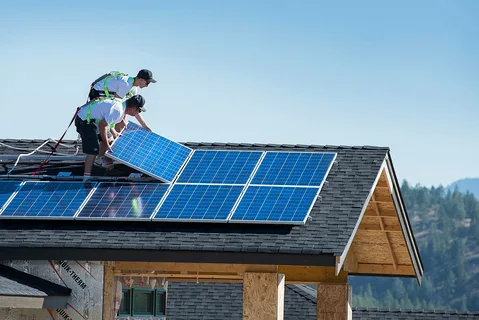As the world shifts towards sustainable solutions, solar power has emerged as one of the most popular and effective sources of clean energy. Understanding how a solar power system works is essential for beginners eager to embrace renewable energy for their homes or businesses. This guide will break down the basics and explain the key components of a solar power setup.
What is a Solar Power System?
A solar power system captures sunlight and converts it into usable electricity. It’s an eco-friendly technology that reduces dependence on fossil fuels, helping to lower carbon footprints and energy bills simultaneously. Whether you want to power a small device or your entire home, knowing how a solar power system works can empower you to make smarter energy choices.
Main Components of a Solar Power System
1. Solar Panels
Solar panels are the heart of the system. Made up of photovoltaic (PV) cells, they absorb sunlight and convert it into direct current (DC) electricity. The amount of energy produced depends on the panel’s size, quality, and sunlight exposure.
2. Inverter
Since most homes use alternating current (AC) electricity, the DC electricity generated by the solar panels must be converted. This is where the inverter comes in — it changes DC into AC so that your appliances can use the energy.
3. Battery Storage (Optional)
Some solar power systems include batteries to store excess energy produced during sunny periods. This stored energy can be used at night or during cloudy days, ensuring a continuous power supply.
4. Charge Controller
The charge controller regulates the voltage and current coming from the solar panels to the batteries, preventing overcharging and prolonging battery life.
5. Electrical Panel and Meter
The electrical panel distributes the solar power throughout your home, and the meter tracks your energy production and usage. In grid-tied systems, excess energy can often be sent back to the grid, sometimes earning credits or payments.
How a Solar Power System Works: Step-by-Step
- Sunlight Hits the Panels: Solar panels capture sunlight and convert it into DC electricity.
- Electricity Conversion: The inverter converts DC electricity into AC electricity suitable for home use.
- Energy Distribution: The electricity flows to your home’s electrical panel and powers your appliances.
- Excess Energy: If your system is grid-tied, excess energy can be sent back to the grid; if you have batteries, surplus energy is stored for later use.
- Energy Monitoring: Your system’s meter tracks energy consumption and production.
Benefits of Using Solar Power
- Renewable and Clean: Solar energy is abundant and does not produce harmful emissions.
- Cost Savings: Reduces electricity bills and can increase property value.
- Low Maintenance: Solar systems require minimal upkeep once installed.
- Energy Independence: Less reliance on traditional power grids and fossil fuels.
Conclusion
Understanding how a solar power system works is the first step toward adopting clean energy solutions. With simple components working together, solar energy offers a reliable and sustainable way to power your life. Whether for environmental benefits or financial savings, transitioning to solar energy is a smart and impactful choice.

